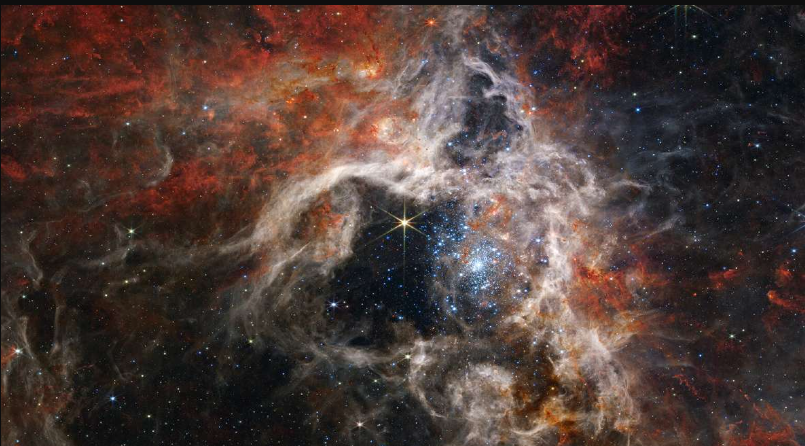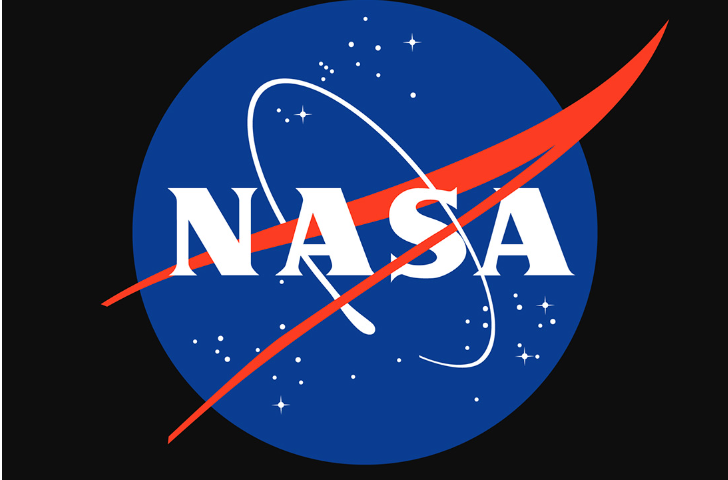Spider-Verse: A giant space tarantula captured by NASA's Webb telescope
September 07, 2022 By Awanish Kumar

(Image Credit Google)
The incredibly sensitive James Webb Space Telescope, operated by NASA, has successfully captured a massive space tarantula.
The Tarantula Nebula, also known as 30 Doradus, is the "biggest and brightest star-forming region in the Local Group, the galaxies nearest our Milky Way," according to NASA's Jet Propulsion Laboratory. It is located 161,000 light-years from Earth in the Large Magellanic Cloud galaxy.
According to NASA, it contains the hottest and largest stars that are currently known to scientists and resemble the silky interior of a burrowing tarantula.
According to NASA, the Near-Infrared Camera, or NIRCam, on the Webb telescope has enabled scientists to observe the area "in a new light, including tens of thousands of never-before-seen young stars that were previously veiled in cosmic dust."
Strong winds from the stars are resisted by the nebula's densest surrounding regions, creating pillars that appear to point back toward the cluster and retain developing protostars.
These protostars emerge from their "dusty cocoons" and help shape the nebula. The Webb telescope's Near-Infrared Spectrograph caught a very young star doing that, which changed astronomers' previous beliefs about that star.
"Astronomers previously thought this star might be a bit older and already in the process of clearing out a bubble around itself," according to NASA. "However, NIRSpec showed that the star was only just beginning to emerge from its pillar and still maintained an insulating cloud of dust around itself.
"Without Webb's high-resolution spectra at infrared wavelengths, this episode of star formation in action could not have been revealed."
Another Webb instrument that can look through the nebula's dust grains and detect longer infrared wavelengths revealed a "before unexplored cosmic environment," according to NASA. The scorching stars disappeared as the cooler gas and dust shone.

Because of its chemical resemblance to the vast star-forming regions at the cosmic noon, when star creation was at its zenith when the universe was only a few billion years old, the Tarantula Nebula has long been a focus of astronomers investigating star formation.
The Tarantula Nebula was the site of NASA's Webb telescope's most recent finding of star formation.
Recently, NASA unveiled breathtaking new pictures of the Phantom Galaxy, a spiral of solar systems 32 million light-years from Earth, taken by the Webb and the Hubble telescopes. The ESA, which works with NASA on Hubble and Webb, claims that the galaxy is situated in the constellation of Pisces.
After decades of development, the largest and most advanced space telescope in the world, Webb was finally launched on Christmas Day of last year.
Just a few weeks ago, in July, NASA made the first high-resolution photographs available.
Bigger than Hubble, the telescope is capable of observing extremely distant galaxies, allowing scientists to learn about early star formation. Hubble orbits Earth, but Webb orbits the sun, around 1 million miles away from Earth.
By Awanish Kumar
I keep abreast of the latest technological developments to bring you unfiltered information about gadgets.

 Because of its chemical resemblance to the vast star-forming regions at the cosmic noon, when star creation was at its zenith when the universe was only a few billion years old, the Tarantula Nebula has long been a focus of astronomers investigating star formation.
The Tarantula Nebula was the site of NASA's Webb telescope's most recent finding of star formation.
Recently, NASA unveiled breathtaking new pictures of the Phantom Galaxy, a spiral of solar systems 32 million light-years from Earth, taken by the Webb and the Hubble telescopes. The ESA, which works with NASA on Hubble and Webb, claims that the galaxy is situated in the constellation of Pisces.
After decades of development, the largest and most advanced space telescope in the world, Webb was finally launched on Christmas Day of last year.
Just a few weeks ago, in July, NASA made the first high-resolution photographs available.
Bigger than Hubble, the telescope is capable of observing extremely distant galaxies, allowing scientists to learn about early star formation. Hubble orbits Earth, but Webb orbits the sun, around 1 million miles away from Earth.
Because of its chemical resemblance to the vast star-forming regions at the cosmic noon, when star creation was at its zenith when the universe was only a few billion years old, the Tarantula Nebula has long been a focus of astronomers investigating star formation.
The Tarantula Nebula was the site of NASA's Webb telescope's most recent finding of star formation.
Recently, NASA unveiled breathtaking new pictures of the Phantom Galaxy, a spiral of solar systems 32 million light-years from Earth, taken by the Webb and the Hubble telescopes. The ESA, which works with NASA on Hubble and Webb, claims that the galaxy is situated in the constellation of Pisces.
After decades of development, the largest and most advanced space telescope in the world, Webb was finally launched on Christmas Day of last year.
Just a few weeks ago, in July, NASA made the first high-resolution photographs available.
Bigger than Hubble, the telescope is capable of observing extremely distant galaxies, allowing scientists to learn about early star formation. Hubble orbits Earth, but Webb orbits the sun, around 1 million miles away from Earth.






